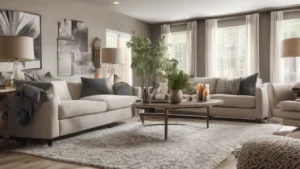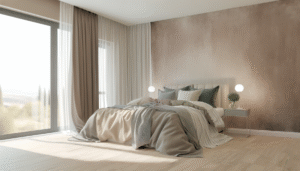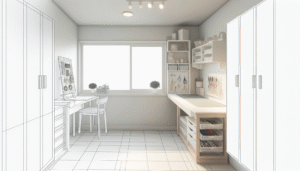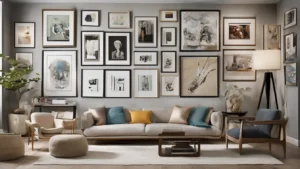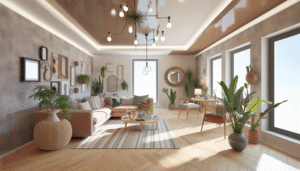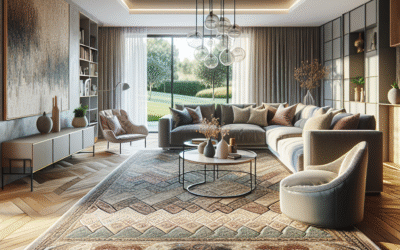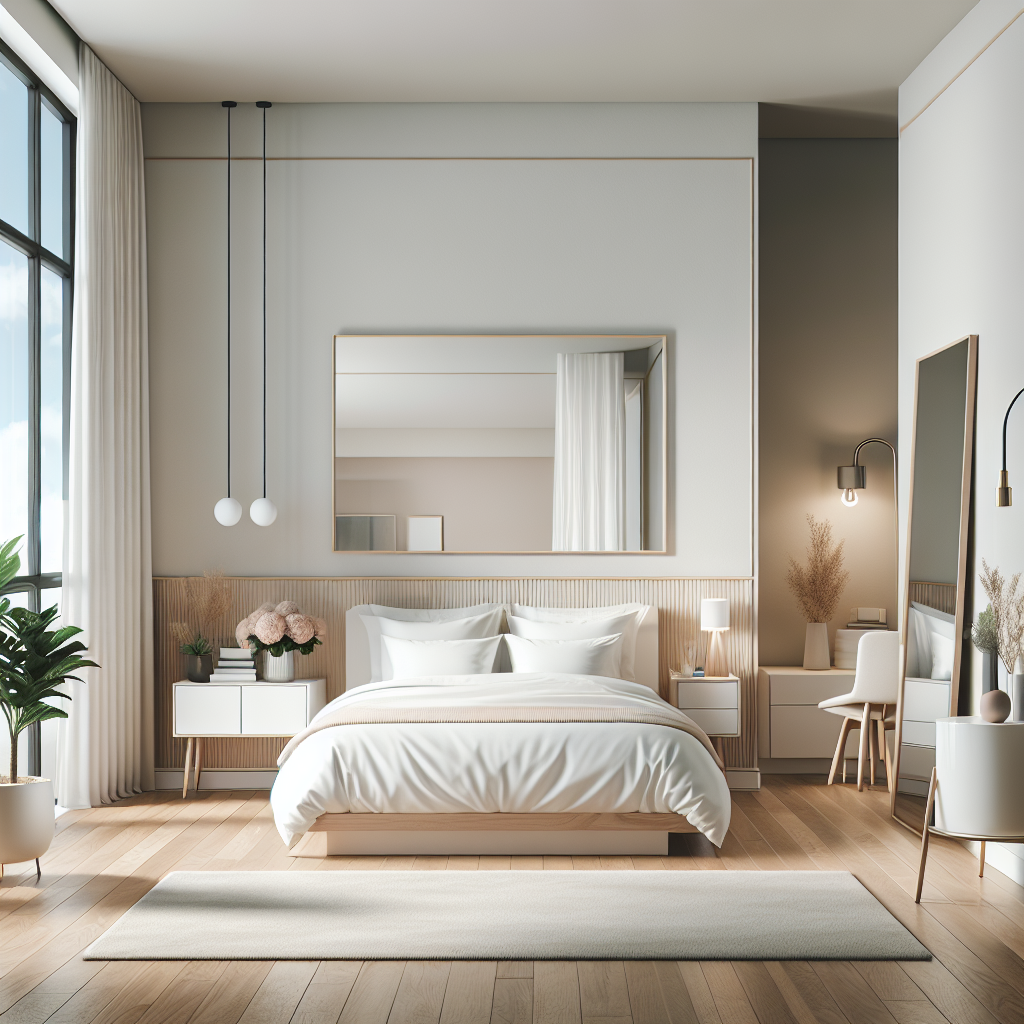
Your bedroom: it’s more than just a place to sleep, isn’t it? It’s your personal retreat, a haven where you recharge and prepare for the day ahead. And honestly, in our chaotic, always-connected lives, creating a serene sanctuary is more crucial than ever. That’s where minimalist design comes in. It’s not just about having less stuff; it’s about intentionally curating a space that promotes calm, focus, and relaxation. Sound good? Let’s get started.
Why Minimalist Design for Your Bedroom?
Think about it: how often do you walk into your bedroom and feel instantly stressed by the clutter? A minimalist bedroom, on the other hand, encourages peace of mind. It’s about reducing visual noise, creating a sense of spaciousness, and allowing your mind to breathe. Ever notice how much better you sleep in a well-organized hotel room? Minimalist design brings that feeling home.
And it goes beyond just aesthetics, honestly. A clutter-free environment is easier to clean and maintain, saving you time and energy. Plus, studies have shown that minimalist living can reduce stress and anxiety. It’s like hitting the reset button on your mental state every time you walk through the door. But where do we start, you ask? Don’t worry, we’ll get there!
Decluttering: The First Step to Serenity
Okay, let’s be real: this is often the hardest part. But it’s also the most important. You can’t create a minimalist sanctuary if you’re surrounded by mountains of stuff you don’t need or use. So, buckle up; it’s clearing out time!
The KonMari Method: Does it Spark Joy?
You’ve probably heard of Marie Kondo and her famous KonMari Method. The basic idea is simple: hold each item in your hand and ask yourself, “Does this spark joy?” If the answer is no, thank it for its service and let it go. It sounds a bit woo-woo, I know, but surprisingly effective. Thinking about things we own in terms of the joy they bring – or don’t – can be really eye-opening. Does that pile of clothes you’ve been meaning to donate for six months spark joy just sitting there? I didn’t think so.
Practical Decluttering Tips
- Start Small: Don’t try to declutter your entire bedroom in one day. It’s overwhelming! Focus on one drawer, one shelf, or one corner at a time.
- The 20/20 Rule: If you can replace something for under $20 and in under 20 minutes, it’s probably not worth keeping “just in case.”
- The One-In-One-Out Rule: For every new item you bring into your bedroom, get rid of something similar.
- Be Honest with Yourself: Are you *really* going to read that book again? Are you *really* going to fit into those jeans again? If the answer is no, let it go.
Decluttering is a process, not a one-time event. Be patient with yourself, and celebrate your progress along the way. And remember, you’re not just getting rid of stuff; you’re creating space for peace and tranquility. But, of course, clearing out the clutter is only half the battle. What comes next is all about smart design planning.
Color Palette: Setting the Mood with Neutrals and Accents
Color psychology is a real thing, folks. The colors you surround yourself with can have a profound impact on your mood and energy levels. In a minimalist bedroom, a calming color palette is essential.
The Power of Neutrals
Neutrals like white, beige, gray, and soft pastels create a sense of spaciousness and tranquility. They reflect light, making the room feel brighter and more open. Think of a blank canvas – neutrals provide the perfect backdrop for your personal style to shine. Plus, they’re incredibly versatile. You can layer different shades of neutrals to create depth and interest without overwhelming the space. Linen is a great material for adding depth – just a thought.
Adding Pops of Color
While neutrals should dominate, don’t be afraid to add a few pops of color to liven things up. Think of it as adding little sparks of personality. A single piece of art, a colorful throw pillow, or a vase of fresh flowers can add visual interest without disrupting the overall sense of calm. But, and this is important, keep it minimal. Choose one or two accent colors that complement your neutrals and repeat them throughout the room. Navy blue, forest green, and blush pink are all popular choices for minimalist bedrooms. And don’t be afraid to get creative! What colors do *you* find calming?
Furniture: Quality Over Quantity
In a minimalist bedroom, every piece of furniture should serve a purpose and contribute to the overall aesthetic. It’s about choosing quality over quantity and investing in pieces that are both functional and beautiful.
The Essentials
- Bed: This is the centerpiece of your bedroom, so choose wisely. A simple platform bed with a clean, low-profile design is a great choice.
- Nightstands: One or two nightstands provide a place for a lamp, a book, and your phone. Look for nightstands with drawers or shelves for storage.
- Dresser: If you need a dresser, choose one that is appropriately sized for your space and has plenty of storage.
- Seating (Optional): If you have the space, a comfortable chair or bench can create a cozy reading nook.
Think about it: do you really need that bulky armoire that’s been collecting dust in the corner? Probably not. Choose furniture that is both practical and visually appealing, and don’t be afraid to get rid of anything that doesn’t fit the bill. You know, having too much furniture can almost be as bad as having too much stuff lying around. The goal after all is serenity, not storage.
Also, consider multipurpose items. Could you get a bed frame with built-in drawers? Less clutter and more space – it’s a win-win.
Materials Matter
When choosing furniture, pay attention to the materials. Natural materials like wood, linen, and cotton add warmth and texture to the space. Avoid synthetic materials that can look cheap and feel cold. Wood is especially great for adding a touch of nature to your bedroom. Ever notice how calming it can be to be in nature? Well, bringing a little bit of the outdoors in can have a similar effect.
Lighting: Creating a Calming Glow
Lighting plays a huge role in the overall ambiance of your bedroom. Harsh, glaring lights can be jarring and disruptive, while soft, warm light creates a sense of calm and relaxation. Smart lighting choices can really transform a space, you know?
Natural Light is Your Friend
Maximize natural light whenever possible. Open your curtains or blinds during the day to let the sunshine in. Not only does natural light make the room feel brighter and more spacious, but it also has numerous health benefits, like boosting your mood and regulating your sleep cycle. If you don’t have a lot of natural light, consider adding a mirror to reflect the light that you do have.
Layer Your Lighting
In addition to natural light, you’ll also need artificial light for evenings and nighttime. Aim for a layered lighting scheme that includes:
- Ambient Lighting: This provides overall illumination for the room. A ceiling fixture or a floor lamp can serve as ambient lighting.
- Task Lighting: This provides focused light for specific tasks, such as reading or writing. A bedside lamp is a great example of task lighting.
- Accent Lighting: This highlights specific features of the room, such as artwork or architectural details. A small spotlight or a string of fairy lights can be used as accent lighting.
Choose bulbs that emit a warm, soft light. Avoid cool, blue-toned bulbs, which can be harsh and stimulating. Dimmable switches are also a great way to control the intensity of the light and create the perfect mood. And, honestly, who doesn’t love a good dimmer switch? They just give you so much more control.
Textiles: Adding Warmth and Texture
Textiles are a great way to add warmth, texture, and personality to your minimalist bedroom. Think of them as the finishing touches that tie everything together.
Bedding
Your bedding is the most important textile in your bedroom. Choose soft, natural materials like cotton, linen, or silk. A simple duvet cover and a few throw pillows are all you need to create a cozy and inviting bed. Avoid overly patterned or embellished bedding, which can be visually distracting. What about a weighted blanket, I wonder? They’re supposed to reduce anxiety and enhance sleep quality, after all.
Curtains
Curtains not only provide privacy and block out light, but they also add softness and texture to the room. Choose light, airy fabrics like linen or cotton for a minimalist look. Avoid heavy, dark curtains, which can make the room feel smaller and more closed in. And if you’re really committed to the minimalist aesthetic, consider using sheer curtains that let in plenty of natural light while still providing some privacy. Plus, sheer curtains are great for adding a touch of elegance to your bedroom. It’s like adding a veil of serenity!
Rugs
A rug can anchor the space and add warmth underfoot. Choose a rug that is appropriately sized for your bedroom and has a simple, neutral design. Natural materials like wool or jute are great choices for a minimalist look. You know, sometimes a rug is just what a room needs to feel complete. Almost like the final piece of a puzzle.
Accessories: Less is More
In a minimalist bedroom, accessories should be carefully chosen and intentionally placed. The goal is to add personality and visual interest without cluttering the space. Remember, less is definitely more.
Meaningful Decor
Choose accessories that have personal meaning to you, such as:
- Artwork: A single piece of art can add a focal point to the room. Choose artwork that you find calming and inspiring.
- Plants: Plants add life and energy to the space. Choose low-maintenance plants like succulents or snake plants.
- Books: A small stack of your favorite books can add a personal touch.
- Personal Mementos: A few carefully chosen mementos can remind you of happy memories. But keep it minimal!
Avoid purely decorative items that don’t serve a purpose or have any personal meaning. Remember, every item in your bedroom should contribute to the overall sense of peace and tranquility. That ceramic unicorn you got as a gag gift? Probably best to keep that out of the sanctuary.
Storage Solutions
Even in a minimalist bedroom, you’ll still need some storage. But instead of just piling everything into a corner, look for storage solutions that are both functional and aesthetically pleasing. Baskets, boxes, and shelves can help you keep your belongings organized and out of sight. And if you’re short on space, consider using under-bed storage containers to store seasonal clothing or extra bedding. Out of sight, out of mind, right?
You can check out some great ideas for inspiration here.
Technology Detox: Creating a Tech-Free Zone
In today’s always-connected world, it’s more important than ever to create a tech-free zone in your bedroom. The blue light emitted by electronic devices can disrupt your sleep and make it harder to relax. Consider this the final boss battle in your quest for creating your sanctuary.
Ban the Devices
Ideally, your bedroom should be a sanctuary from technology. That means no TV, no computer, and no phone. I know, I know, it’s a tough one, but give it a try. If you absolutely must have your phone in the bedroom, keep it out of reach and turn off notifications. Resist the urge to check your email or social media before bed or first thing in the morning. Trust me, the world can wait a few hours.
Replace with Relaxation
Instead of technology, fill your bedroom with things that promote relaxation, such as:
- Books: Reading a physical book can help you unwind before bed.
- Journals: Writing in a journal can help you process your thoughts and emotions.
- Meditation Apps: If you must use technology, try a meditation app to help you relax and fall asleep.
- Soothing Sounds: A white noise machine or a fan can help block out distracting noises.
Creating a tech-free zone in your bedroom can significantly improve your sleep quality and overall well-being. It’s like giving your mind a much-needed vacation. Plus, who knows, you might even rediscover the joys of reading a real book or having a conversation with your partner before bed. Remember how good those things feel?
Speaking of relaxation, have you considered aromatherapy? A subtle scent can do wonders in your bedroom. You can get more information about it here.
Maintaining Your Minimalist Sanctuary
Creating a minimalist bedroom is one thing, but maintaining it is another. To keep your sanctuary serene and clutter-free, make a habit of decluttering regularly. A little bit of maintenance can go a long way towards helping you maintain that “just right” and uncluttered feeling.
The 15-Minute Rule
Spend just 15 minutes each day decluttering your bedroom. You’d be surprised how much you can accomplish in such a short amount of time. Focus on putting things back in their place, getting rid of any trash, and tidying up any clutter. It’s like a daily dose of mental clarity. And the great thing is, it’s easier to do a little every day than a massive overhaul every few months.
The Weekend Reset
On the weekends, take a little extra time to do a more thorough cleaning of your bedroom. Dust, vacuum, and change your bedding. This will help you maintain a clean and healthy environment. It’s like hitting the reset button on your sanctuary. Plus, there is honestly nothing quite like crawling into a bed with fresh sheets!
Be Mindful of What You Bring In
Before you bring anything new into your bedroom, ask yourself if you really need it. Will it add value to your space, or will it just contribute to the clutter? Be intentional about what you bring into your sanctuary. This is a great way to keep your minimalist bedroom from reverting back to its cluttered state. After all, prevention is the best medicine, right?
Creating a minimalist bedroom is a journey, not a destination. It requires a shift in mindset and a commitment to living with less. But the rewards are well worth the effort. A minimalist bedroom can promote relaxation, reduce stress, and improve your overall well-being. So, take a deep breath, embrace the simplicity, and create the sanctuary you deserve. Now, isn’t that a worthwhile endeavor?
FAQ: Your Questions Answered
DISCLAIMER
This article provides general information about minimalist bedroom design and is intended for educational and entertainment purposes only. It should not be considered professional advice. Readers should consult with qualified professionals before making any decisions related to their home decor or lifestyle. The author and publisher are not responsible for any consequences resulting from the use of this information. Individual results may vary.
Categories
- Accent Walls & Ceilings (61)
- Art Curation & Gallery (62)
- Bedding Style Trends (68)
- Bedroom Makeover (81)
- Bohemian & Eclectic Styles (58)
- DIY & Budget-Friendly Decor (64)
- Eco-Friendly Design (62)
- Furniture Care (71)
- Home Decor & Design Ideas (162)
- Home Wellness Spaces (59)
- Integrated Outdoor Living (67)
- Japandi Style (61)
- Kids and Nursery Decor (59)
- Living Room Decor (79)
- Mix & Match Techniques (73)
- Modern & Contemporary Design (66)
- Rug Sizing & Placement (73)
- Scandinavian Design Inspiration (20)
- Seasonal Home Decor (79)
- Small Space Solutions (73)
- Wall Art & Painting Tips (77)
Recent Comments
Archives
Product Gallery
-
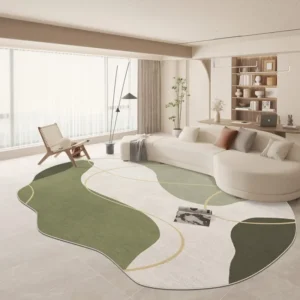 Large Area Green Rugs for Bedroom Nordic Living Room Decoration Shaped Carpet Irregular Plush Lounge Rug Home Thick Washable Mat
Rated 5.00 out of 5$54.94 – $346.41Price range: $54.94 through $346.41
Large Area Green Rugs for Bedroom Nordic Living Room Decoration Shaped Carpet Irregular Plush Lounge Rug Home Thick Washable Mat
Rated 5.00 out of 5$54.94 – $346.41Price range: $54.94 through $346.41 -
 Nordic Style Rugs for Bedroom Morandi Living Room Decoration Carpet Large Area Geometry Lounge Rug Home Cloakroom Non-slip Mat
Rated 5.00 out of 5$39.46 – $597.66Price range: $39.46 through $597.66
Nordic Style Rugs for Bedroom Morandi Living Room Decoration Carpet Large Area Geometry Lounge Rug Home Cloakroom Non-slip Mat
Rated 5.00 out of 5$39.46 – $597.66Price range: $39.46 through $597.66 -
 Irregular Shapes Living Room Decoration Carpet Modern Style Rugs for Bedroom Home Thicken Plush Rug Fluffy Soft Lounge Floor Mat
Rated 4.83 out of 5$55.84 – $347.37Price range: $55.84 through $347.37
Irregular Shapes Living Room Decoration Carpet Modern Style Rugs for Bedroom Home Thicken Plush Rug Fluffy Soft Lounge Floor Mat
Rated 4.83 out of 5$55.84 – $347.37Price range: $55.84 through $347.37

